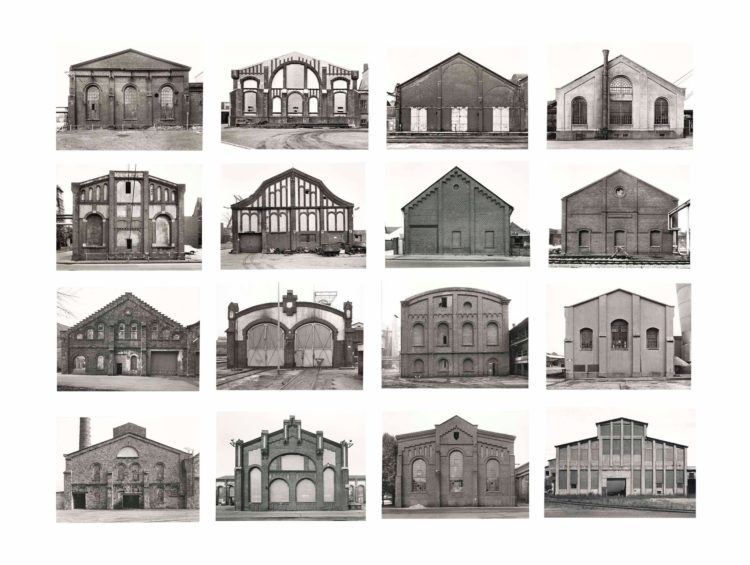Screening
The Photographs Bernd and Hilla Becher
Director: Marianne Kapfer
90 min. Color and black and white, 2011
Thursday, June 20, 2019
@ 20:00.
This screening is in continuation of a project in collaboration with Goethe Zentrum Tirana, where every month a contemporary Albanian artist is invited to select a film from the film archive of Goethe Institute and to present his choice to ZETA’s public. The guest artist, who has selected the film, The Photographs Bernd and Hilla Becher, is Olson Lamaj.
About the film
Blast furnaces, winding towers, processing plants – in many places the dilapidated remains of industrial development – live on in the photographs of Bernd and Hilla Becher. The couple from Düsseldorf tell the story of their lives, work and activities, which for four decades were dedicated to photographing industrial facilities.
“When we noticed that industrial facilities were disappearing, we started recording this with the camera. We didn’t do anything else apart from this. We felt it was our duty.”
Bernd Becher, born in 1931 in Siegen, originally used to draw and paint the cottages and mines threatened with demolition in the region around his hometown and in the neighboring industrial areas. In 1957 he began to photograph industrial structures since photography offered both greater precision and a more objective representation. After an apprenticeship as a stage painter, Bernd Becher studied typography at the Kunstakademie Düsseldorf in 1957. It was here that he met Hilla Wobeser. Born in Potsdam in 1934, she relocated to West Germany in 1954 after completing three years of training in a photographic studio and worked in Hamburg as a self-employed photographer. From 1958 onwards, she studied at the Kunstakademie Düsseldorf and was also in charge of its film processing lab. In 1959, Bernd and Hilla Becher started their combined career by photographing the ore mines and half-timbered buildings of the industrial region around Siegen, and later the industrial plants in the Ruhr area. They married in 1961.
The film follows a trail that traces the Bechers’ most important photographic periods and motifs: from their beginnings, including the half-timbered houses in Siegerland, the focal points of their first foreign trips in the Sixties such as the collieries in Wales or the furnaces in Lothringen, to the mines in the Ruhr area. Nowadays, an impeller wheel or an overturned blast furnace boiler standing in a green field is often the only reminder that coal was once mined, or steel smelted, here. Very few of the industrial sites that they photographed are still in operation today. A small number have survived as museums, such as the “Zollern 2” colliery in Dortmund. The Bechers have been photographing this colliery since 1969 and saved the machinery hall from destruction by means of a public campaign. Through their work, the Bechers have also helped to raise awareness of the preservation of industrial heritage.
Blast furnaces, winding towers, processing plants – in many places the dilapidated remains of industrial development – live on in the photographs of Bernd and Hilla Becher. The couple from Düsseldorf tell the story of their lives, work and activities, which for four decades were dedicated to photographing industrial facilities.
“When we noticed that industrial facilities were disappearing, we started recording this with the camera. We didn’t do anything else apart from this. We felt it was our duty.”
Bernd Becher, born in 1931 in Siegen, originally used to draw and paint the cottages and mines threatened with demolition in the region around his hometown and in the neighboring industrial areas. In 1957 he began to photograph industrial structures since photography offered both greater precision and a more objective representation. After an apprenticeship as a stage painter, Bernd Becher studied typography at the Kunstakademie Düsseldorf in 1957. It was here that he met Hilla Wobeser. Born in Potsdam in 1934, she relocated to West Germany in 1954 after completing three years of training in a photographic studio and worked in Hamburg as a self-employed photographer. From 1958 onwards, she studied at the Kunstakademie Düsseldorf and was also in charge of its film processing lab. In 1959, Bernd and Hilla Becher started their combined career by photographing the ore mines and half-timbered buildings of the industrial region around Siegen, and later the industrial plants in the Ruhr area. They married in 1961.
The film follows a trail that traces the Bechers’ most important photographic periods and motifs: from their beginnings, including the half-timbered houses in Siegerland, the focal points of their first foreign trips in the Sixties such as the collieries in Wales or the furnaces in Lothringen, to the mines in the Ruhr area. Nowadays, an impeller wheel or an overturned blast furnace boiler standing in a green field is often the only reminder that coal was once mined, or steel smelted, here. Very few of the industrial sites that they photographed are still in operation today. A small number have survived as museums, such as the “Zollern 2” colliery in Dortmund. The Bechers have been photographing this colliery since 1969 and saved the machinery hall from destruction by means of a public campaign. Through their work, the Bechers have also helped to raise awareness of the preservation of industrial heritage.
